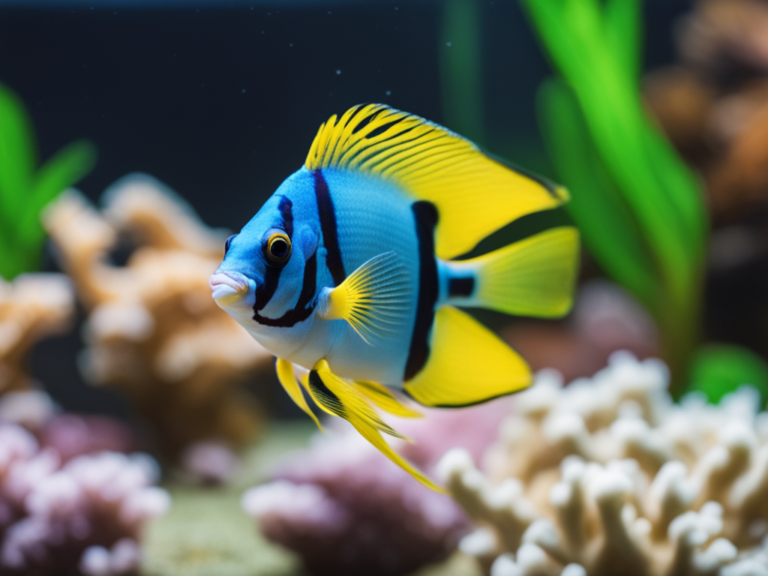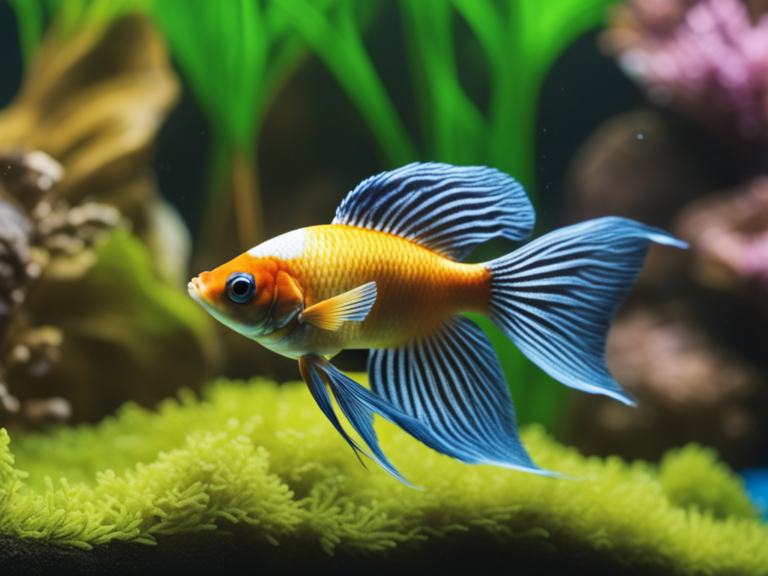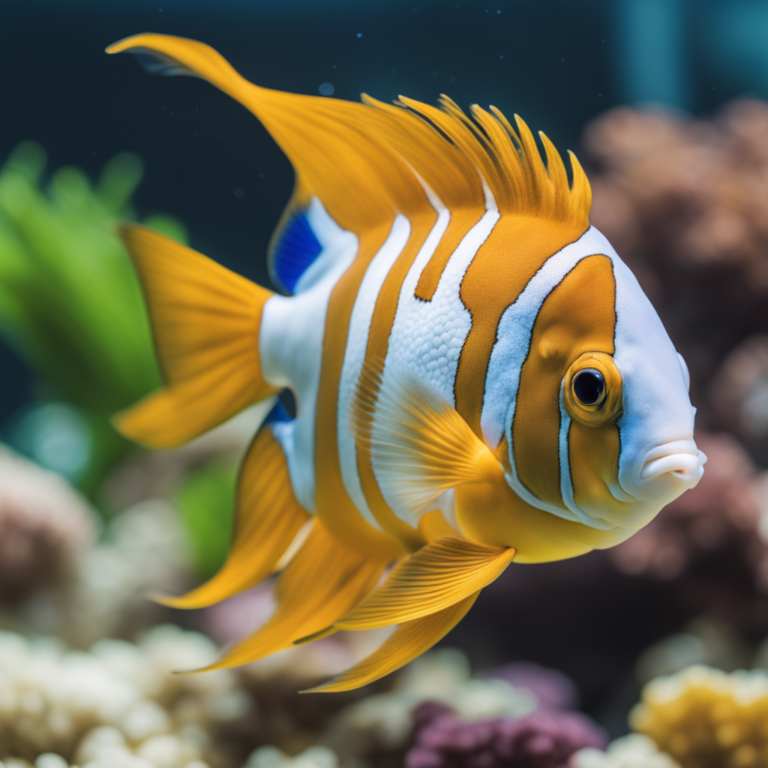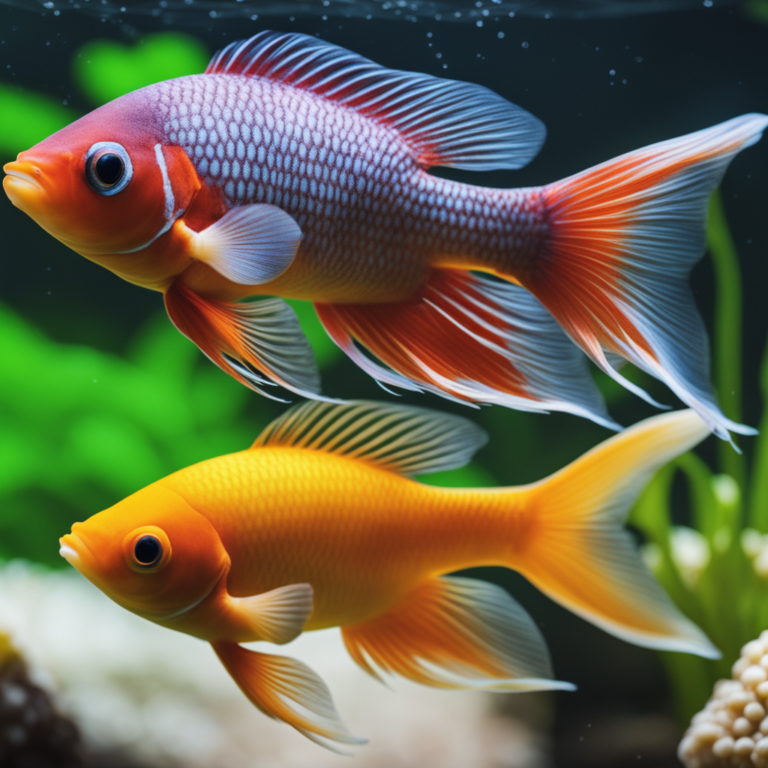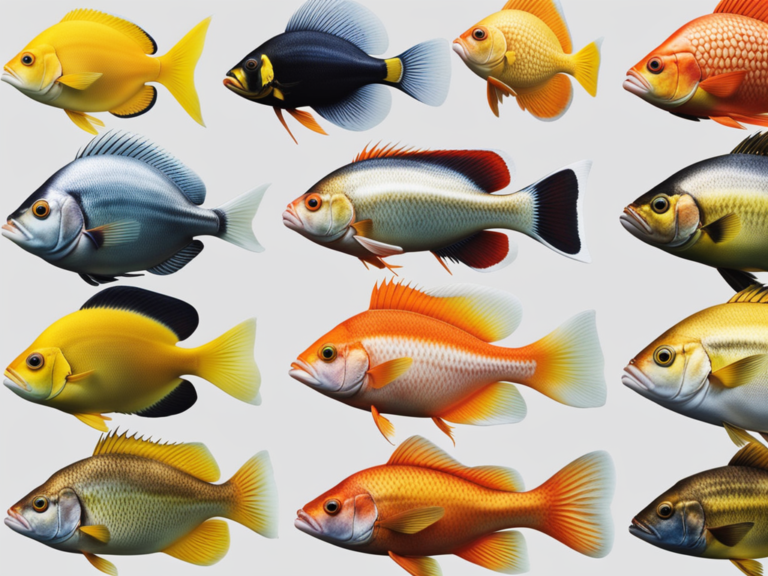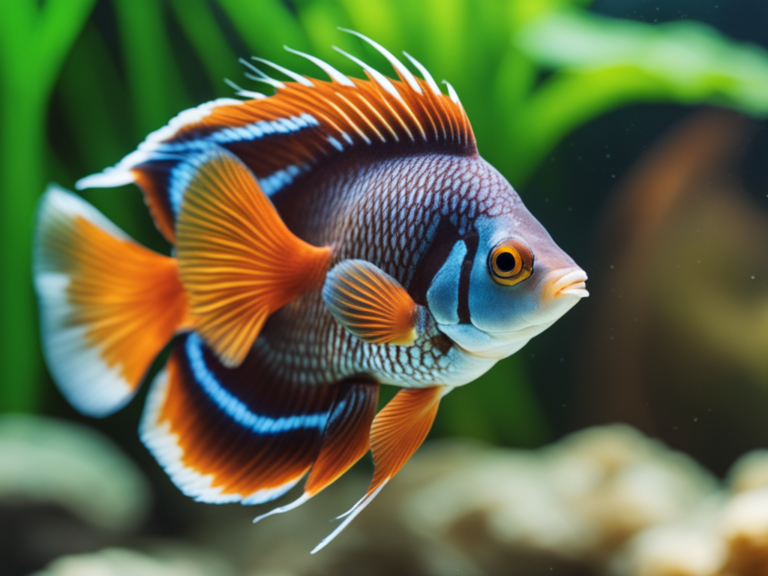10 Fish Breeds That Prefer Warm Water Detailed
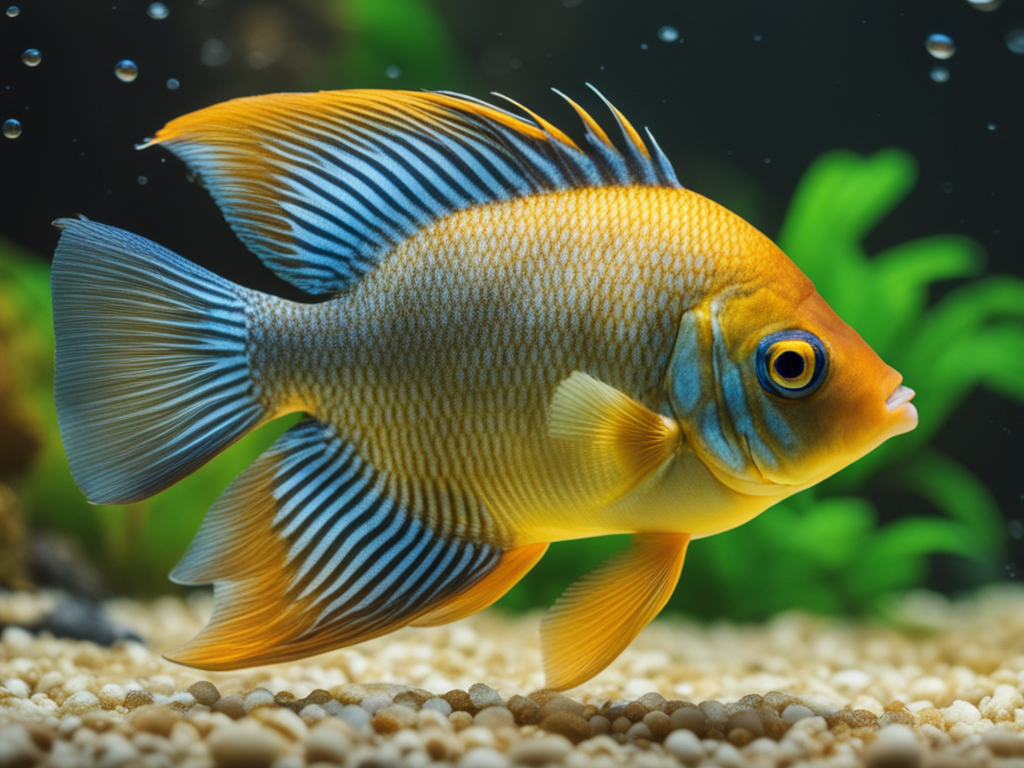
Fish Breeds That Prefer Warm Water: Imagine yourself floating in a tropical paradise, surrounded by shimmering turquoise waters and basking in the warm embrace of the sun. Now, picture beautiful fish gracefully gliding through those waters, their vibrant colors reflecting the vibrant energy of their environment. These are the fish breeds that prefer warm water, thriving in temperatures that mimic their natural habitats.
From the elegant guppies to the fierce bettas, these fish species bring a touch of the exotic to your aquarium. Whether it’s the playful swordtails, the lively tetras, or the charismatic mollies, each breed adds a unique charm to your underwater world. So, if you’re ready to create a tropical oasis right in your own home, dive in and discover the fascinating fish breeds that prefer warm water.
Guppies
If you’re looking to keep guppies in your aquarium, you’ll need to provide them with warm water. Guppies, also known as Poecilia reticulata, are tropical fish that require specific conditions to thrive. Understanding their breeding patterns and implementing proper care tips is crucial for beginners.
Guppies are livebearers, meaning they give birth to live young instead of laying eggs. The breeding patterns of guppies are quite fascinating. Females can store sperm for several months and produce multiple broods from a single mating. They can also give birth to 20-100 fry at a time. This prolific reproduction allows guppy populations to expand rapidly in suitable environments.
To ensure the well-being of your guppies, it is essential to maintain a stable and warm water temperature. The ideal temperature range for guppies is between 74°F and 82°F (23°C and 28°C). Avoid sudden temperature changes as it can stress the fish and affect their health. Using a reliable aquarium heater and thermometer will help you monitor and maintain the water temperature accurately.
In addition to warm water, guppies require a well-balanced diet. Provide them with high-quality flake or pellet food designed specifically for tropical fish. Supplement their diet with occasional treats like live or frozen brine shrimp, daphnia, or bloodworms. Remember to feed them in small amounts multiple times a day to prevent overfeeding and maintain water quality.
Regular water changes are crucial for guppy care. Aim for weekly water changes of about 20-25% to remove accumulated toxins and maintain optimal water conditions. Use a water conditioner to remove chlorine and chloramines from tap water before adding it to the aquarium.
Bettas
- Betta fish prefer warm water temperatures between 78°F and 80°F (25°C and 27°C) for optimal health and well-being. Maintaining the right water temperature is crucial for the overall care and happiness of your betta fish. Here are some betta fish care tips to ensure that you provide the best environment for your finned friend:
- Choosing the right tank for bettas: Bettas need space to swim and explore, so it is important to provide them with a tank that is at least 2.5 gallons in size. A larger tank with a capacity of 5 gallons or more is even better, as it allows for more swimming room and better water quality. Avoid small bowls or containers as they restrict movement and provide inadequate filtration.
- Temperature regulation: Invest in a reliable aquarium heater to maintain a consistent water temperature within the recommended range. This will help your betta fish thrive and prevent them from becoming stressed or susceptible to diseases.
- Water quality: Bettas are sensitive to poor water conditions, so regular water changes are essential. Aim for weekly water changes of 25% to 50% to keep the water clean and free from harmful toxins. Use a water conditioner to remove chlorine and chloramines from tap water before adding it to the tank.
- Tank setup: Provide your betta fish with a well-decorated tank that includes hiding spots, live or silk plants, and gentle filtration. Bettas appreciate having places to hide and explore, as it mimics their natural habitat. Avoid sharp decorations or plastic plants that can tear their delicate fins.
Swordtails
To continue caring for your fish breeds that prefer warm water, let’s now discuss swordtails, which also thrive in higher water temperatures. Swordtails (Xiphophorus hellerii) are a popular freshwater fish known for their vibrant colors and distinctive sword-like tails. They are native to Central America and typically inhabit rivers, streams, and ponds with temperatures ranging from 72 to 82 degrees Fahrenheit. If you’re interested in breeding swordtails, here are some tips to help you succeed.
Firstly, it’s important to separate the male and female swordtails before breeding. The males can be identified by their elongated lower fins, called swords, while females have a rounder and larger body shape. Place the female in a separate tank, preferably one with a ratio of one male to two or three females. This will reduce the chances of the female being overly stressed by the male’s persistent mating attempts.
To encourage successful breeding, provide your swordtails with a properly set up tank. A spacious aquarium with a capacity of at least 20 gallons is recommended, as swordtails require ample swimming space. The tank should be equipped with a heater to maintain the water temperature between 72 and 82 degrees Fahrenheit, which is ideal for their reproductive health. Additionally, it’s important to provide hiding places such as plants, rocks, or driftwood to create a sense of security for the fish.
When it comes to feeding, a varied diet is essential for the health and reproductive success of swordtails. Offer them a combination of high-quality flakes, pellets, and frozen or live foods like brine shrimp or daphnia. Supplementing their diet with vegetable matter like blanched spinach or spirulina flakes will also ensure proper nutrition.
Mollies
Now let’s move on to mollies, another breed of fish that thrives in warmer water temperatures, following the discussion on swordtails. Mollies are a popular choice among fish enthusiasts due to their vibrant colors and interesting breeding habits. Here are some key points to consider when caring for mollies:
- Breeding habits of mollies: Mollies are livebearers, which means they give birth to live young instead of laying eggs. They are known for their high reproductive rate and can produce a large number of fry in a short period. Male mollies have a modified anal fin called a gonopodium, which they use to transfer sperm to the female during mating. It is important to provide plenty of hiding places, such as plants or caves, for the fry to survive as mollies may prey on their own young.
- Ideal tank conditions for mollies: Mollies are tropical fish and thrive in warm water temperatures ranging from 75°F to 82°F (24°C to 28°C). They prefer a pH level between 7.0 and 8.5 and a water hardness of 20 to 30 dGH. It is important to maintain good water quality by regularly testing and monitoring ammonia, nitrite, and nitrate levels. Mollies are highly adaptable and can tolerate a wide range of salinity levels, making them suitable for both freshwater and brackish water tanks.
- Tank size and setup: Mollies are active swimmers and require ample space to move around. A minimum tank size of 20 gallons is recommended for a small group of mollies, with additional space needed for each additional fish. Providing a well-planted tank with plenty of hiding places and open swimming areas will create a comfortable environment for mollies. It is also important to maintain a stable temperature and provide a filtration system to keep the water clean and oxygenated.
- Compatible tank mates: Mollies are generally peaceful fish and can coexist with a variety of tank mates. However, it is best to avoid keeping them with aggressive or fin-nipping species. Good tank mates for mollies include other peaceful community fish such as guppies, platies, and tetras. Keeping a balanced ratio of male-to-female mollies will help reduce aggression among males.
Platies
Platies, another warm-water fish breed, are known for their vibrant colors and peaceful nature. These small, brightly colored fish are a popular choice for aquarium enthusiasts. One of the most distinctive features of platies is their unique color variations. They come in a wide range of colors, including red, orange, yellow, blue, and even black. Some plates also have striking patterns such as stripes or spots, adding to their visual appeal.
When it comes to breeding habits, platies are livebearers, which means they give birth to fully-formed young instead of laying eggs. This makes them relatively easy to breed in captivity. Male platies are known for their elaborate courtship displays, where they swim around the female in a zigzag pattern, flashing their colorful fins. Once the female is ready to mate, she will release eggs, which the male fertilizes externally. After a gestation period of about four weeks, the female will give birth to a batch of baby platies.
Platies are generally easy to care for, making them suitable for beginner fishkeepers. They prefer warm water temperatures between 72°F and 82°F (22°C and 28°C) and thrive in a well-maintained aquarium with plenty of hiding spots and vegetation. They are omnivorous, so a varied diet of high-quality flakes, pellets, and occasional live or frozen foods should be provided. Regular water changes and monitoring of water parameters, such as pH and ammonia levels, are essential to ensure the health and well-being of these colorful fish.
Angelfish
If you’re keeping fish that prefer warm water, one breed you should consider is angelfish. These beautiful freshwater fish are known for their unique shape and graceful swimming. Here are some important things to know about angelfish:
- Angelfish breeding techniques and tips: Breeding angelfish can be a rewarding experience. To encourage breeding, it’s important to provide the right conditions. Maintain a water temperature between 78 and 82 degrees Fahrenheit and a pH level between 6.5 and 7.0. Angelfish are known to be picky about their partners, so it’s recommended to introduce several males and females into the tank to increase the chances of successful mating. Once the eggs are laid, they will be cared for by the parents until they hatch.
- The different color variations of angelfish and their characteristics: Angelfish come in a variety of color variations, each with its own unique characteristics. Some popular color variations include:
- Silver angelfish: These are the most common and have a stunning silver body with vertical black stripes. They are known for their peaceful nature and make great additions to community tanks.
- Marble angelfish: These have a marbled pattern on their body, with swirls of black, white, and gray. They are known for their playful and active behavior.
- Veil angelfish: These have long, flowing fins that resemble a veil. They come in various colors and are a popular choice among aquarists for their striking appearance.
- Koi angelfish: These have a vibrant orange or red coloration with black markings, resembling a koi fish. They are prized for their unique pattern and are a favorite among enthusiasts.
Killifish
The Killifish is a warm-water breed of fish that thrives in a variety of aquatic habitats. Known for their vibrant colors and unique breeding habits, Killifish is a popular choice among aquarium enthusiasts.
One fascinating aspect of Killifish is their diverse breeding habits. Unlike many other fish species, Killifish are annual breeders. This means that they have a short lifespan and complete their entire life cycle within a year. During the rainy season, when the water temperature rises, Killifish lay their eggs in the mud or on vegetation near the water’s edge. These eggs can withstand periods of drought and low oxygen levels, allowing them to survive until the next rainy season when they hatch.
Another characteristic that sets Killifish apart is their striking color variations. These fish come in a wide range of hues, from vibrant reds and oranges to deep blues and greens. The brilliant colors of Killifish are thought to play a role in attracting mates and establishing dominance within their social groups. Additionally, these colors serve as a form of camouflage, helping them blend into their natural habitats and avoid predators.
Tetras
When keeping a warm water aquarium, you may want to consider adding tetras to your collection. Tetras are a popular choice among fish enthusiasts due to their vibrant colors, peaceful nature, and ease of care. Here are some tetra fish care tips and the best tetra fish tank setup to ensure the well-being of these beautiful creatures:
- Tank size: Tetras are small fish and can thrive in a tank as small as 10 gallons. However, it is recommended to provide them with a larger tank, preferably 20 gallons or more, to allow for better swimming space and a more stable environment.
- Water temperature and pH: Tetras prefer warm water with a temperature range of 72-80°F (22-27°C). Maintain a pH level between 6.0 and 7.5 to ensure their optimal health and well-being.
- Tank decorations: Create a natural environment for your tetras by adding live plants, rocks, and driftwood. These decorations not only provide hiding spots but also mimic their natural habitat, making the fish feel more comfortable and secure.
- Tank mates: Tetras are peaceful fish and can coexist with other peaceful species. Avoid keeping them with aggressive or fin-nipping fish. Good tank mates for tetras include other small, non-aggressive species like guppies, corydoras catfish, and dwarf shrimp.
Rasboras
To continue caring for your tetras and expanding your warm water aquarium, consider adding rasboras to your collection. Rasboras are small, peaceful fish that thrive in warm water environments. They are known for their vibrant colors and active swimming behavior, making them a beautiful and lively addition to any aquarium.
When it comes to breeding habits, rasboras are relatively easy to breed. They are egg scatterers, meaning that they lay their eggs among plants or other surfaces in the aquarium. To encourage breeding, provide your rasboras with plenty of hiding places, such as plants or caves. It is also important to maintain optimal water conditions, including a temperature between 75 to 82 degrees Fahrenheit and a pH level of 6.5 to 7.5. Additionally, consider having a separate breeding tank where the eggs can be protected from other fish and predators.
In terms of tank requirements, rasboras prefer spacious tanks with plenty of swimming space. A tank size of at least 20 gallons is recommended for a small school of rasboras. It is important to provide them with a well-planted tank, as they enjoy having places to hide and explore. Additionally, ensure that the water is properly filtered and aerated to maintain good water quality.
Barbs
Add barbs to your warm water aquarium for a lively and colorful addition. Barbs are a popular choice among fish enthusiasts due to their vibrant colors and active behavior. Here are some important points to consider when it comes to breeding habits, techniques, common diseases, and their treatment for barbs:
- Breeding habits and techniques for barbs:
- Barbs are relatively easy to breed in captivity.
- They are egg-layers and require a separate breeding tank for successful breeding.
- Provide them with plenty of hiding places and dense vegetation to simulate their natural habitat.
- The water temperature should be maintained between 75-80°F for optimal breeding conditions.
- Common diseases and their treatment for barbs:
- Ich (Ichthyophthirius multifiliis) is a common disease among barbs. It presents as white spots on the body and fins.
- Treat ich by raising the water temperature to 86°F and using an anti-parasitic medication.
- Fin rot is another common ailment characterized by the deterioration of the fins. It is caused by bacterial infections.
- To treat fin rot, improve water quality, and use antibiotics if necessary.
- Velvet disease (Oodinium) presents as a golden or rust-colored dust on the fish’s body.
- Treat velvet disease with copper-based medications and maintain good water quality.
Fish Breeds That Prefer Warm Water Frequently Asked Questions:
What Are the Common Diseases That Guppies Are Prone To?
Common guppy diseases include fin rot, dropsy, and swim bladder disorder. Prevention and treatment involve maintaining clean water, proper nutrition, and regular monitoring. Breeding tips include selecting healthy parents and providing a stress-free environment.
How Long Does It Take for Bettas to Reach Their Full Size?
Betta’s growth rate varies depending on several factors. Factors affecting betta growth include diet, water quality, tank size, and genetics. On average, it takes bettas around 4-6 months to reach their full size.
Can Swordtails and Mollies Be Kept Together in the Same Aquarium?
Yes, swordtails and mollies can be kept together in the same aquarium. They have similar care requirements, as swordtails prefer warm water and mollies are known for their breeding behavior.
What Is the Average Lifespan of Platies in Warm Water Conditions?
In warm water, platies typically have an average lifespan of 2-3 years. Their breeding habits are prolific, with females giving birth to live young every 4-6 weeks.
Are Angelfish Compatible With Other Species of Fish in a Community Tank?
Angelfish behavior in community tanks depends on compatibility with different fish species. They can be territorial and aggressive, especially during breeding. Research the specific species you want to add to ensure a harmonious tank environment.
Conclusion
In conclusion, several fish breeds prefer warm water environments. Guppies, bettas, swordtails, mollies, platies, killifish, tetras, rasboras, and barbs are all examples of such breeds. These fish thrive in temperatures that range from 75 to 82 degrees Fahrenheit, as warmer water provides them with optimal conditions for growth, reproduction, and overall well-being. Therefore, fish enthusiasts must consider the temperature requirements of these breeds when creating a suitable aquatic habitat.



